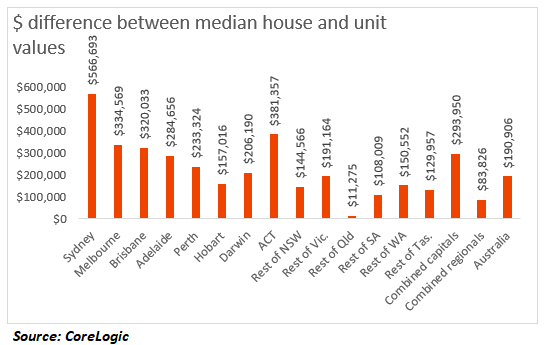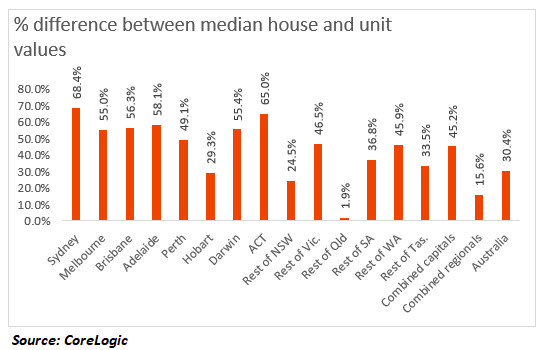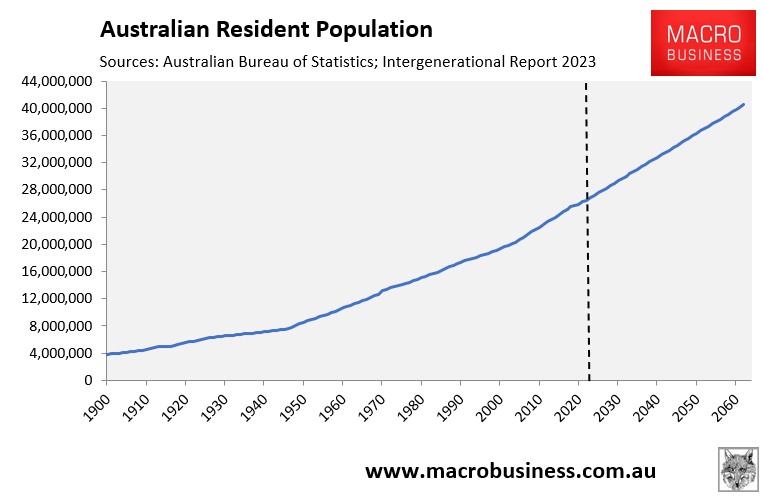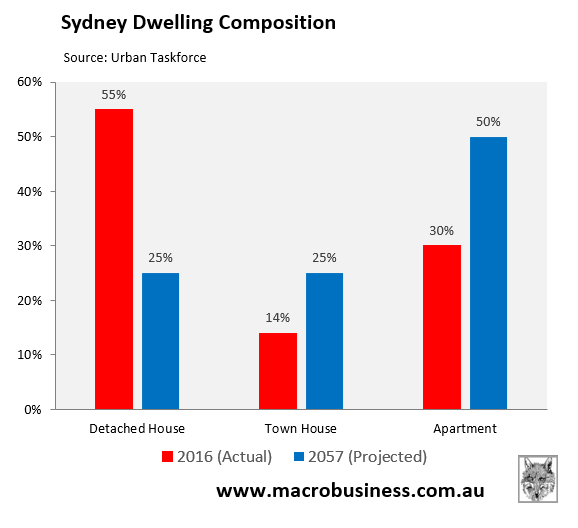CoreLogic has released analysis showing that the price gap between detached houses and apartments hit a record high $293,950 as at January 2024:

Source: CoreLogic
“At the onset of the pandemic in March 2020, the house premium, or the difference between median capital city house and unit values, was just 16.7%. Fast forward almost four years later, and that premium has jumped to 45.2% or $293,950”, notes CoreLogic.
“Since the onset of the pandemic to January this year, capital city house values have increased by 33.9% or by $239,000. Unit values over the same period are up 11.2% or $65,235”.
As expected, the premium is greatest in Sydney where the median house is worth nearly $567,000 more than the median apartment:

In percentage terms, Sydney’s premium is also the largest at 68.4%, versus 30.4% nationally:

Melbourne, Perth, Adelaide and Brisbane have all seen their house premium grow between 15 and 16 percentage points over the same period.
The below table summarises the changes in the house price premium across the jurisdictions:

“House prices have moved out of reach for a growing portion of the population, especially those seeking a first home or lower income households”, CoreLogic notes.
“With housing affordability remaining a key challenge across Australia, the substantially lower price points across the medium to high density sector are likely to become increasingly in demand”.
The federal government’s ‘Big Australia’ immigration policy has resulted in a 8.1 million increase in Australia’s population this century, with the majority of newcomers arriving in our main cities.
Australia’s population is projected to grow to 40.5 million people (over 50%) over the next 40 years, owing to consistently strong net overseas migration of 235,000 people each year:

The unavoidable result of this expansion has been a strong shift away from detached housing and towards apartment living, particularly in Australia’s largest and most developed built-out cities (e.g., Sydney and Melbourne).
Indeed, modelling released after the 2016 Census by the Urban Taskforce predicted that Sydney’s housing composition would shift considerably over the 41 years to 2057:

In 2016, 55% of Sydney residents lived in detached homes. However, this is expected to reduce to only 25% by 2057, whereas the proportion of Sydney residents living in apartments will increase from 25% to 50% during the same period.
That is the death of the Australian backyard right there.
If given the option, the vast majority of Australians would choose to live in a detached house with a backyard over a townhouse or apartment.
Indeed, during the pandemic, a Westpac poll revealed that 77% of Australians wanted a house with a backyard.
Concerns about apartment build quality and combustible cladding have contributed to the public’s dislike of apartments, according to Westpac senior economist Matthew Hassan.
The federal government’s immigration policies will lead to a future when only the wealthiest can afford detached houses.
Is this the future we desire for our kids?

